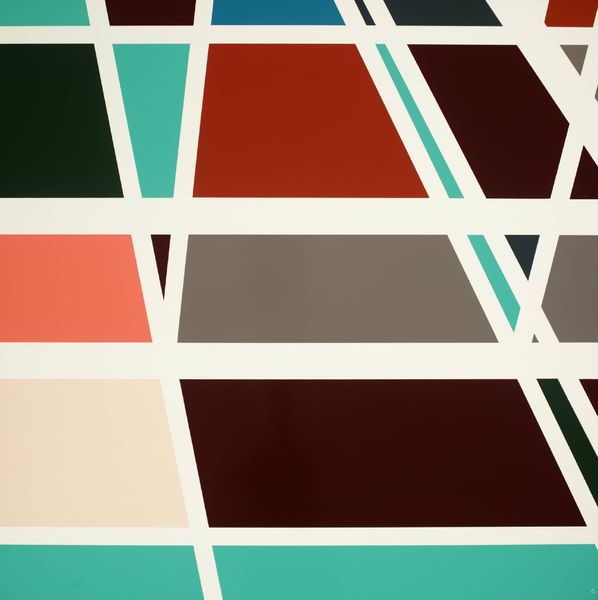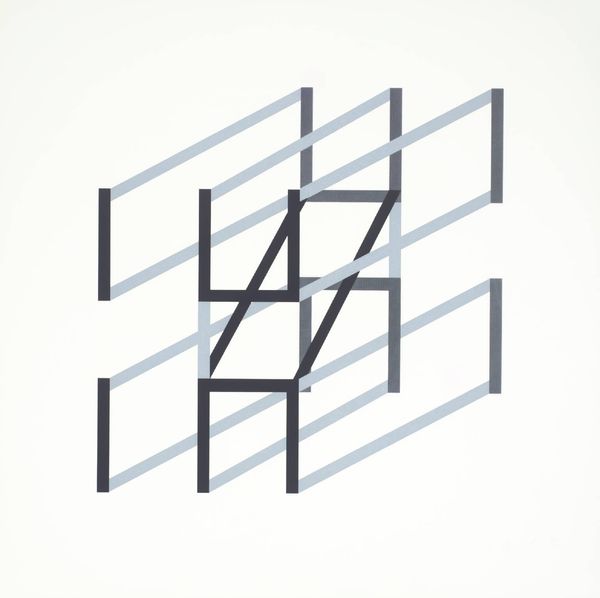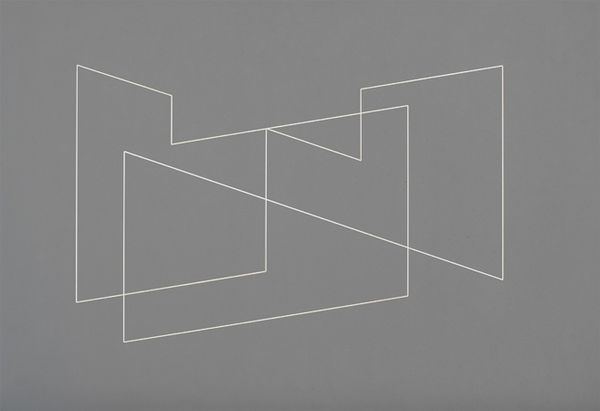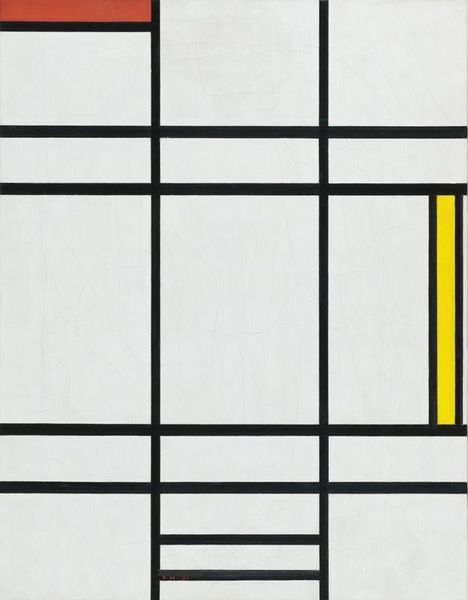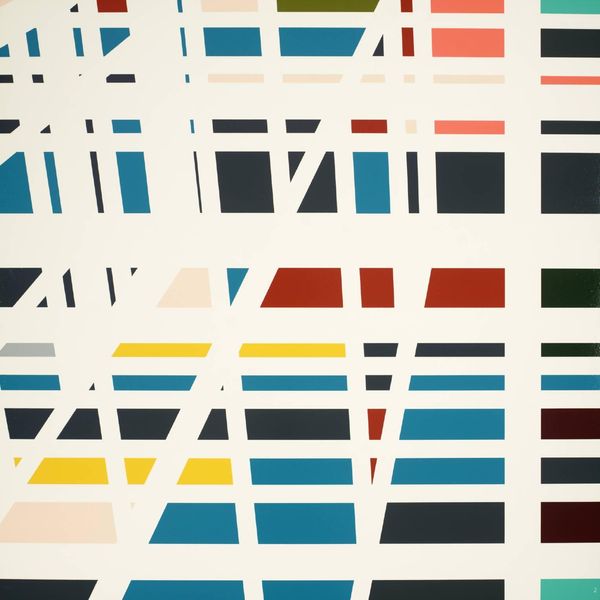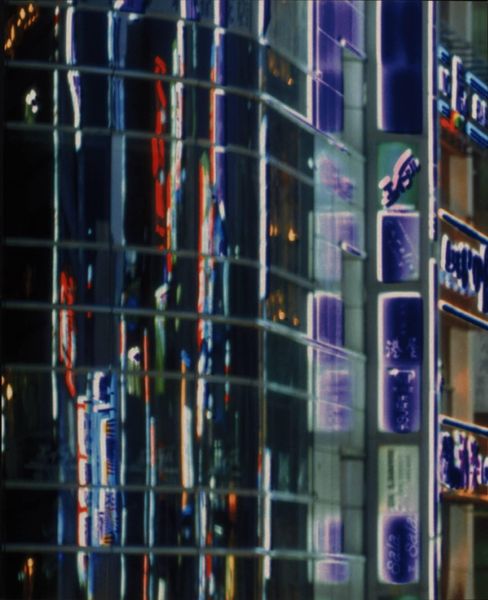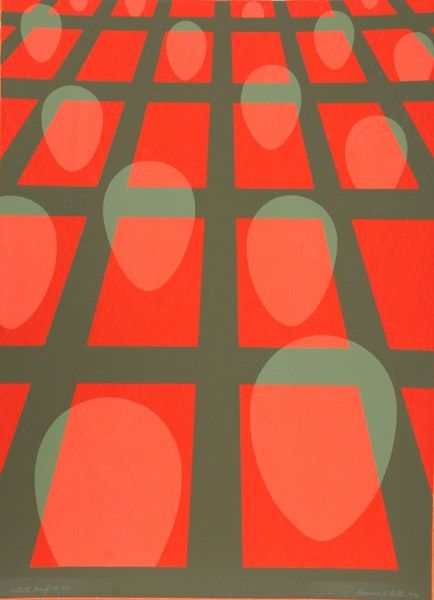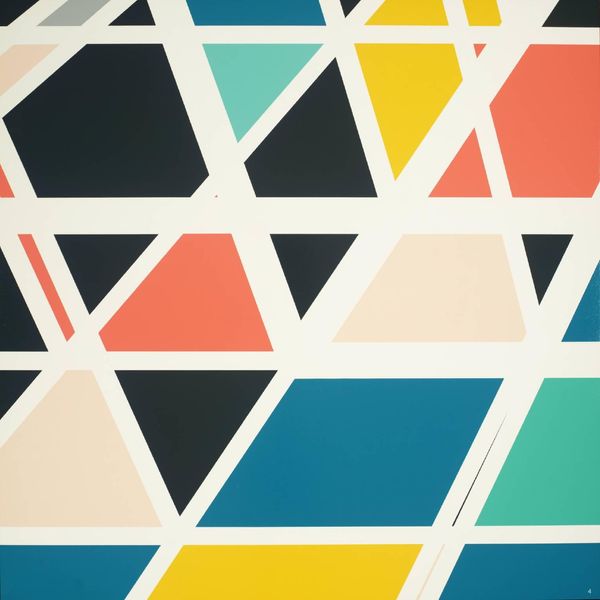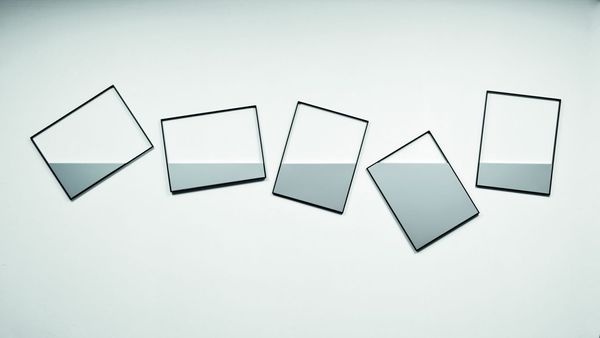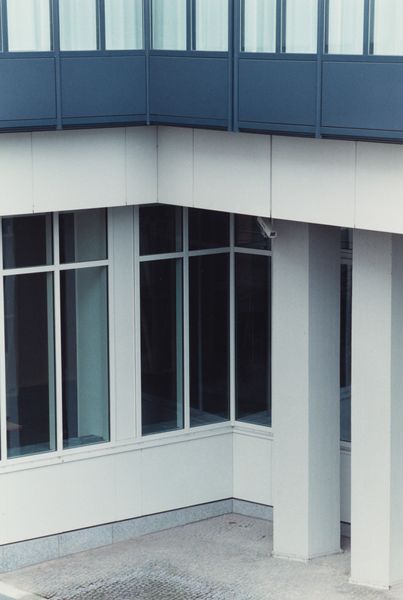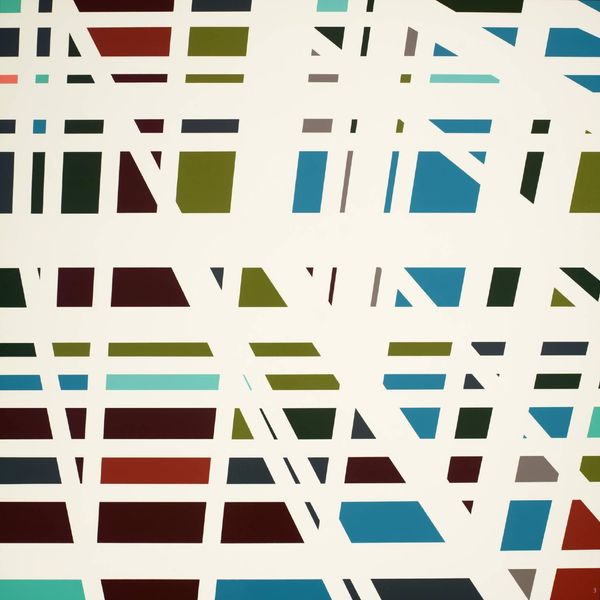
painting
#
painting
#
geometric pattern
#
abstract pattern
#
minimal pattern
#
geometric
#
abstraction
#
pop-art
#
line
#
modern architecture
#
modernism
Copyright: Patrick Caulfield,Fair Use
Editor: Here we have Patrick Caulfield's "Bathroom Mirror" from 1968, currently hanging in the Tate Modern. It’s a painting of a very simple subject matter. I am really intrigued by how such rigid geometry in cool blues manages to evoke such a sterile, almost unnerving mood. What historical context shapes how we should interpret a piece like this? Curator: Good question. Caulfield emerged in a British art scene heavily influenced by Pop Art's fascination with consumerism and everyday objects. However, unlike some of his contemporaries who embraced bold colors and blatant commercial imagery, Caulfield developed a more austere, detached style. Editor: Detached? How so? Curator: Well, think about the title and subject—a bathroom mirror. But where’s the reflection? It’s absent. Caulfield's flat planes and stark lines could be seen as a commentary on the alienation and superficiality increasingly prevalent in a rapidly modernizing society. Do you notice anything else interesting about its presentation? Editor: The way the "mirror" is offset, creating a skewed perspective and sort of disturbing the geometric integrity of the bathroom tiles? It's an unusual composition. Curator: Precisely! This skewed perspective pulls you into the work while simultaneously reminding you of its artifice. He is not attempting to replicate reality. Caulfield used accessible imagery to probe complex emotions and unsettling societal observations. Editor: It seems deceptively simple, but your reading gives me a whole new appreciation for how this artwork participates in broader cultural anxieties. Curator: I find it fascinating how art mirrors (no pun intended) the mood and tempo of social change.
Comments
No comments
Be the first to comment and join the conversation on the ultimate creative platform.

